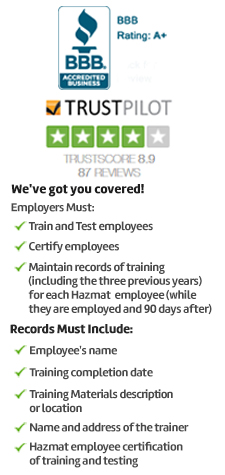
EPA Training & Certification

This course is developed to help students gain general awareness on arsenic and health impacts when workers are exposed to it at workplaces. The training program covers all aspects of arsenic exposure, potential sources where it can be detected, health risks and symptoms when exposed, preventive procedures and applicable rules and regulations to make workplaces free from arsenic. It also addresses compliance system for workers to avoid arsenic exposure.
Governing regulations
The EPA looks after the regulations regarding the standard policies for arsenic contamination in the work environment. The Occupational Safety and Health Administration (OSHA) and the National Institute for Occupational Safety and Health (NIOSH) have formulated guidelines to prevent workers getting exposed to arsenic contamination. The American Conference of Governmental Industrial Hygienists (ACGIH) provides “threshold limit value” (TLV) for industrial chemicals such as arsenic.
Who Must Take this Course?
Workers, who are associated with potentially high risk areas of arsenic exposure and their employers, should know the risks perception about the work environment and become familiar with safe work practices and safety procedures that can minimize the risk of poisoning, illness and fatalities.
Course Format
Our online training course on Arsenic Safety contains good quality content, audio, , graphics, self-practice questions, and a final exam.
All successful students will be provided with hard copy of completion certificate and can print a wallet card.
Continuing education credits?
Each student will receive 0.2 CEUs (or 2 CMEs) for completing this course.
Topics Covered
- About This Course
- Course Objectives
- Introduction to Arsenic Safety Training
- Overview of the Sources of Arsenic Exposure
- Overview of Human Health Risks from Arsenic Exposure
- Importance of Awareness of Arsenic Risks
- Overview of Applicable Standards and Regulations for Arsenic
- Key Terms
- Characteristics, Uses, and Sources of Arsenic
- Arsenic Compounds
- Organic Arsenic
- Inorganic Arsenic
- Arsine
- Where Is Arsenic Found?
- Arsenic Exposure from Drinking Water
- Arsenic Exposure from Plant-Based Foods
- Arsenic Exposure from Rice and Rice Products
- Arsenic Exposure from Meat and Dairy Products
- Arsenic Exposure from Seafood
- Industrial Sources of Arsenic Exposure
- Arsenic Exposure from Wood Preservatives
- Arsenic Exposure from Agricultural Chemicals
- Other Industrial Sources of Arsenic Exposure
- Arsenic and Its Impact on Human Health
- Modes of Arsenic Exposure
- Arsenic Exposure Risks for Children
- Populations at Highest Risk of Arsenic Exposure
- Impact of Arsenic Exposure on Human Health
- Acute Exposure to Inorganic Arsenic
- Chronic Exposure to Inorganic Arsenic
- Medical Treatment for People Exposed to Inorganic Arsenic
- Acute Exposure to Arsine
- Chronic Exposure to Arsine
- Medical Treatment for Arsine Exposure
- Applicable Regulations and Standards for Arsenic
- Regulations and Standards for Arsenic in the Environment
- Regulations and Standards for Arsenic in the Workplace
- Regulations and Standards for Arsenic in Food
- Strategies to Minimize the Impact of Arsenic Exposure on Human Health
- Avoiding Inhalation and Dermal Absorption of Arsenic
- Avoiding the Ingestion of Arsenic
- Emergency Response to Arsine Exposure
- Emergency First Aid for Arsenic Exposure
- Implementation of Arsenic Exposure Control Program
- Medical Surveillance
- Personal Protective Equipment
- Summary
- Additional Resources
- Exam

 NEBOSH CERTIFICATE
NEBOSH CERTIFICATE NEBOSH DIPLOMA
NEBOSH DIPLOMA IOSH
IOSH SAFETY DIPLOMA
SAFETY DIPLOMA CPD UK
CPD UK ROSPA UK
ROSPA UK FOOD SAFETY
FOOD SAFETY 



